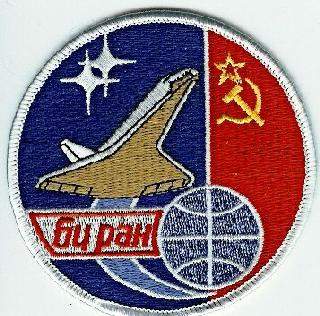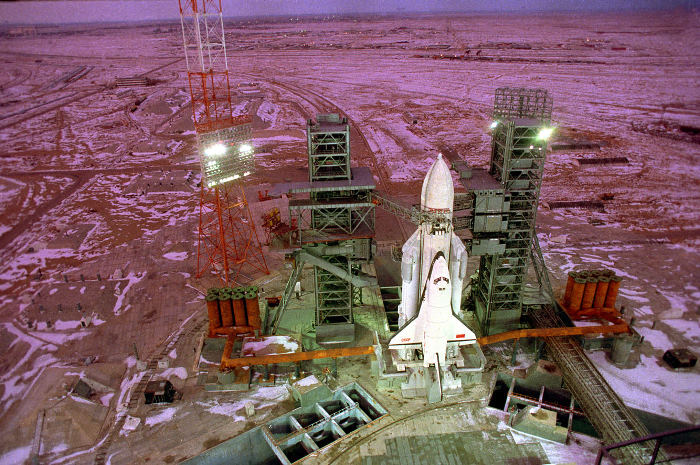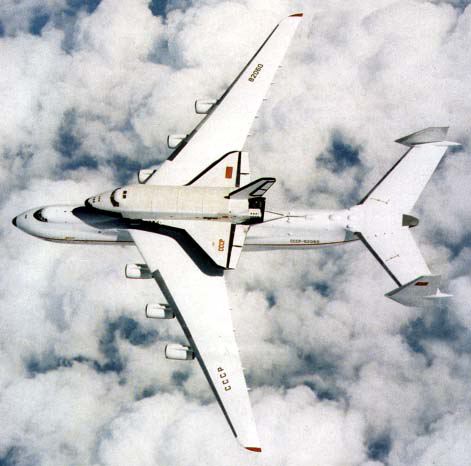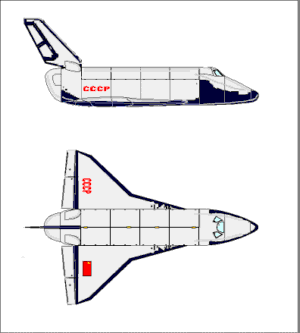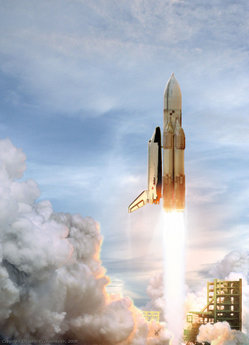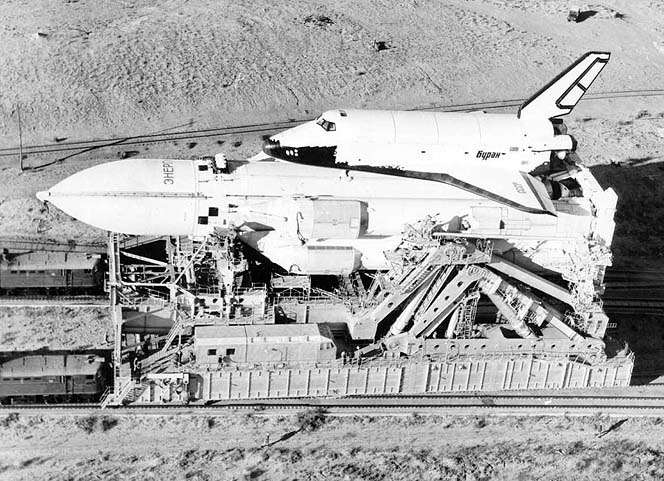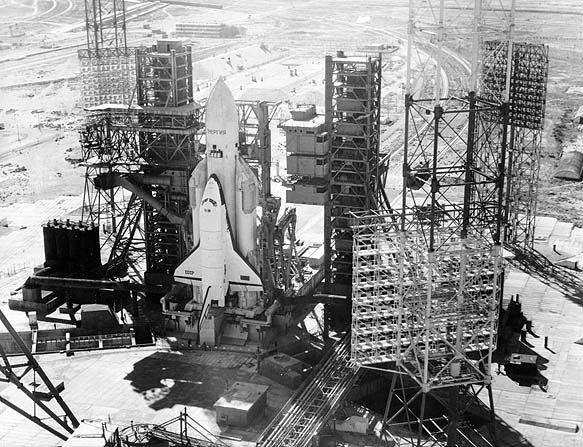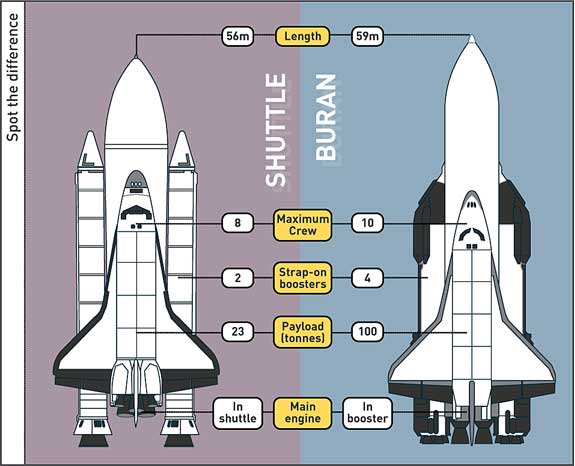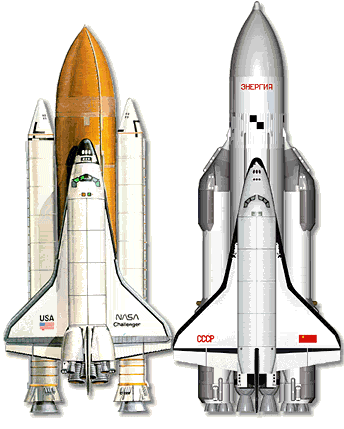|
The Russian Connection |
||||
|
.
Soviet Space Shuttle Buran
The 2nd of two patches worn by Cosmonauts in the Soviet
Union's space shuttle program from 1988 to 1991. This patch is very
rare!
The Soviet Space Shuttle "Buran" (which means snowstorm) was larger, more advanced, and could carry more payload than it's American counterpart. This beautifully embroidered shirt shows the Buran and "Energia" (which means energy) rocket booster on a waving USSR flag.
Buran Soviet Space Shuttle History The Russian Shuttle Buran ("Snowstorm" in Russian)
was authorized in 1976 in response to the United States Space Shuttle program.
Building of the shuttles began in 1980, with the first full-scale Aero-Buran
rolling out in 1984. It was launched by Energia LV.
Test Flights The first suborbital test flight of a scale model of
Buran took place in July 1983. There were five additional flights of the
scale model in following years. Aerodynamic tests of the full-scale Buran
analogue began in 1984. This aero-Buran was worn out after 24 test flights
and would not fly again. The last of these aerodynamic test flights was
in April 1988.
Orbital Launch The first and only orbital launch of the shuttle Buran
was at 3:00 GMT on November 15, 1988. The flight was unmanned, as the life
support system had not been checked out and the CRT displays had no software
installed. The vehicle was launched on the powerful Energiya booster into
an 247 by 256 km orbit at 51.6 degrees inclination. The Buran orbited the
Earth twice before firing its thrusters for reentry. The flight ended at
6:25 GMT when the vehicle touched down at Tyuratum. The Buran 1 mission
was limited to 2 orbits due to computer memory limitations.
Aftermath Although the first orbital flight of Buran was unmanned, it demonstrated much promise. The autopilot that landed the shuttle was able to overcome a 34 mph crosswind to land within 5 feet of the runway center line. Also, of the 38,000 heat shield tiles that covered Buran, only 5 were missing. Cancellation After the first flight of Buran, funding for the project
was cut. Although the project wasn't officially canceled until 1993, much
of the work was halted long before that date. There were two other Buran
shuttles under construction. The second orbiter, "Ptichka" ("Little Bird"
in Russian) was originally scheduled for completion in 1990. The third
Buran was due in 1992. Neither was finished. In November 1995, the partially
completed shuttles were dismantled at their production site. The manufacturing
plant is scheduled to be converted for production of buses, syringes, and
diapers.
|
||||
|
.
|
||||
|
.
* 19:00 27 June 2001
Russia plans to reassert itself as a major power in space by resurrecting the Buran space shuttle, a relic of the Soviet era. It will pay for the development programme in part by taking more space tourists like Dennis Tito up to the space station. Buran was mothballed in the early 1990s by the cash-strapped Russian government. But with the satellite launching business expanding and the International Space Station running behind schedule, Russian space officials think Buran's time has come. Last week Energia, the state company which built Buran, opened its hangars at the Baikonur Cosmodrome in Kazakhstan to show Western aerospace engineers that Buran is ready and waiting for relaunch. "There is a future for this programme," says Leonid
Gurushkin, director of launch operations at Baikonur. "Buran is the only
launcher with a 100-tonne payload," he says. "By extending the length we
can carry 200 tonnes. There is no alternative to Buran and I don't see
any coming." The largest load possible in a Western launcher is little
more than 20 tonnes.
So far, the giant craft has made only one flight, in 1988. Flying without a crew, it orbited the Earth twice, before landing on a purpose-built strip at Baikonur. Energia built two Buran shuttles and three main boosters to carry them. While the Soviet Union was crumbling around them, Energia's engineers continued to get funding because the military saw Buran as vital to any missile defence system similar to America's Star Wars. Buran's only imported component was heat-resistant paint. The Buran project would have employed 30,000 people, and there were plans for up to 30 launches a year. The new Russian government finally cut off funding in 1992. Now the buildings where Buran was designed and built
are being renovated to accommodate Western engineers who come to Baikonur
for commercial satellite launches by Russian Proton rockets. The 4.5-kilometre
landing strip that was built for Buran was recently refurbished by an American
company to land Russian Antonov cargo aircraft, the only planes large enough
to carry big satellites.
Like all Russian space vehicles, and the nuclear-armed missiles on which they were based, Buran is assembled horizontally and moved by rail to the launch pad, where it is raised to vertical. The process takes only a few days. All the necessary machinery is still in place at Baikonur, and the hangars are stacked with spare rocket motor parts and fuel tanks. "The launcher is powered by hydrogen, oxygen and kerosene," says Gurushkin. "The strap-on boosters are reuseable. They drop back to the airstrip. In fact only the core unit is lost." Energia thinks there is now a role for Buran because the International Space Station is creating the need to carry ever larger loads into low orbit. "We have been dreaming of this time," says Gurushkin. Secrets revealed Russia's other state space company, Khrunichev, is a rival to Energia, but its director Alexander Kondratiev says he welcomes any opportunity for Russian space engineers to compete with the West on an equal footing. "Until 1990 we couldn't tell anyone what we were doing. But now we can show the world our worth," he says. Ironically, the money for Buran's revival will be coming from the West. In the past 17 months, Russian Protons have launched 17 commercial satellites, earning Russia more than $100 million per launch. And despite NASA's opposition, Gurushkin says Russian flights to the space station will soon carry more space tourists. "We already have many applications. We are currently considering them all and will take whoever pays most," he says.
|
||||
|
.
|
||||
Technical Data on Construction and Materials - Russian Source |
||||
| FAIR USE NOTICE: This page contains copyrighted material the use of which has not been specifically authorized by the copyright owner. Pegasus Research Consortium distributes this material without profit to those who have expressed a prior interest in receiving the included information for research and educational purposes. We believe this constitutes a fair use of any such copyrighted material as provided for in 17 U.S.C § 107. If you wish to use copyrighted material from this site for purposes of your own that go beyond fair use, you must obtain permission from the copyright owner. | ||||
|
|
